Introduction
0.1 Extension of ISO/IEC 11172-3 Audio Coding to Lower Sampling Frequencies
0.2 Low bitrate coding of multichannel audio
0.2.1 Universal multichannel audio system
0.2.2 Representation of multichannel audio
0.2.2.1 The 3/2-stereo plus LFE format
0.2.2.2 Compatibility
0.2.2.3 Multilingual capability
0.2.3 Basic Parameters of the Multichannel Audio Coding System
0.2.3.1 Compatibility with ISO/IEC 11172-3
0.2.3.2 Audio Input/Output Format
0.2.3.3 Composite Coding Modes
0.2.3.4 Encoder and Decoder Parameters
Section 1: General
1.1 Scope
1.2 Normative References
Section 2: Technical elements
2.1 Definitions
2.2 Symbols and abbreviations
2.2.1 Arithmetic operators
2.2.2 Logical operators
2.2.3 Relational operators
2.2.4 Bitwise operators
2.2.5 Assignment
2.2.6 Mnemonics
2.2.7 Constants
2.3 Method of describing bit stream syntax
2.4 Requirements for Extension of ISO/IEC 11172-3 Audio Coding to Lower Sampling Frequencies
2.4.1 Specification of the Coded Audio Bit stream Syntax
2.4.1.1 Layer I, II
2.4.1.2 Layer III
2.4.2 Semantics for the Audio Bit stream Syntax
2.4.2.1 Audio Sequence General
2.4.2.2 Audio Frame
2.4.2.3 Header
2.4.2.4 Error Check
2.4.2.5 Audio Data Layer I
2.4.2.6 Audio Data Layer II
2.4.2.7 Audio Data Layer III
2.4.2.8 Ancillary Data
2.4.3 The Audio Decoding Process
2.4.3.1 Audio Decoding Layer I, II
2.4.3.2 Audio Decoding Layer III
2.5 Requirements for low bitrate coding of multichannel audio
2.5.1 Specification of the Coded Audio Bit stream Syntax
2.5.1.1 Audio Sequence
2.5.1.2 Audio Frame Layer I
2.5.1.3 Audio Frame Layer II, III
2.5.1.4 MC_extension
2.5.1.5 MPEG1 Header
2.5.1.6 MPEG1 Error Check
2.5.1.7 MPEG1 Audio Data
2.5.1.8 MC Header
2.5.1.9 MC Error Check
2.5.1.10 MC Composite Status Information Layer I, II
2.5.1.11 MC Composite Status Information Layer III
2.5.1.12 MC Audio Data, Layer I and Layer II
2.5.1.13 MC Audio Data, Layer III
2.5.1.14 ML Audio Data, Layer I and Layer II
2.5.1.15 ML Header, Layer III
2.5.1.16 ML Main Data, Layer III
2.5.1.17 MPEG1 Ancillary Data
2.5.1.18 Ext_frame
2.5.1.19 Ext_header
2.5.1.20 Ext_ancillary_data
2.5.2 Semantics for the audio bit stream syntax
2.5.2.1 Audio Sequence General
2.5.2.2 Audio Frame Layer I
2.5.2.3 Audio Frame Layer II, III
2.5.2.4 MC_extension
2.5.2.5 MPEG1 Header
2.5.2.6 MPEG1 Error Check
2.5.2.7 MPEG1 Audio Data
2.5.2.8 MC Header
2.5.2.9 MC Error Check
2.5.2.10 MC Composite Status Info Layer I, II
2.5.2.11 MC Composite Status Information Layer III
2.5.2.12 MC Audio Data Layer I, II
2.5.2.13 MC Audio Data Layer III
2.5.2.14 ML Audio Data Layer I and Layer II
2.5.2.15 ML Audio Data Layer III
2.5.2.16 MPEG-1 Ancillary Data
2.5.2.17 Extension frame
2.5.2.18 Extension header
2.5.3 The Audio Decoding Process
2.5.3.1 General
2.5.3.2 Composite Coding Modes
2.5.3.2.1 Transmission Channel Switching
2.5.3.2.2 Dynamic Crosstalk
2.5.3.2.3 MC_Prediction
2.5.3.3 Requantisation Procedure
2.5.3.4 Decoding of Scalefactors
2.5.3.5 Decoding of Low Frequency Enchancement Channel
2.5.3.6 De-normalisation procedure
2.5.3.7 Synthesis Subband Filter
2.5.3.8 Layer III Decoding
2.5.3.8.1 Layer III Segment Lists
2.5.3.8.2 Decoding Process for Layer III
2.5.3.8.3 Decoding of LFE for Layer III
2.5.3.8.4 Decoding of ML Data for Layer III
Annex A
Diagrams
Annex B
Tables
Table B.1. Possible quantisation per subband, Layer II
Table B.2. Layer III scalefactor bands
Table B.3. Low-pass filter description
Annex C
The encoding process
C.1 Extension to lower sampling frequencies
C.1.1 Lower sampling frequencies, Layer I.
C.1.2 Lower sampling frequencies, Layer II.
C.1.3 Lower sampling frequencies, Layer III
C.2 Multichannel extension
C.2.1 Multichannel extension Layer I, II
C.2.1.1 The filterbank
C.2.1.2 Calculation of scalefactors
C.2.1.3 Psychoacoustic models
C.2.1.4 Predistortion
C.2.1.5 Matrixing
C.2.1.6 Dynamic transmission channel switching
C.2.1.7 Dynamic Crosstalk
C.2.1.8 Adaptive Multichannel Prediction
C.2.1.9 Phantom coding of centre channel
C.2.1.10 Bit Allocation
C.2.1.11 Multilingual
C.2.1.12 Formatting
C.2.2 Multichannel extension Layer III
C.2.2.1 Psychoacoustic models
C.2.2.2 The filterbank
C.2.2.3 Segment list processing
C.2.2.4 Dynamic transmission channel switching
C.2.2.5 Matrixing
C.2.2.6 Adaptive multichannel prediction
C.2.2.7 Quantization and coding
C.2.2.8 Multilingual extensions
Annex D
Psychoacoustic models
D.1 Psychoacoustic Model 1 for Lower Sampling Frequencies
Step 1 Calculation of spectrum
Step 2 Determination of the sound pressure level
Step 3 Considering the threshold in quiet
Step 4 Finding of tonal and non-tonal components
Step 5 Decimation of tonal and non-tonal masking components
Step 6 Calculation of individual masking thresholds
Step 7 Calculation of the global masking threshold LTg
Step 8 Determination of the minimum masking threshold
Step 9 Calculation of the signal-to-mask-ratio
D.2 Psychoacoustic Model 2 for Lower Sampling Frequencies
Annex E
List of patent holders
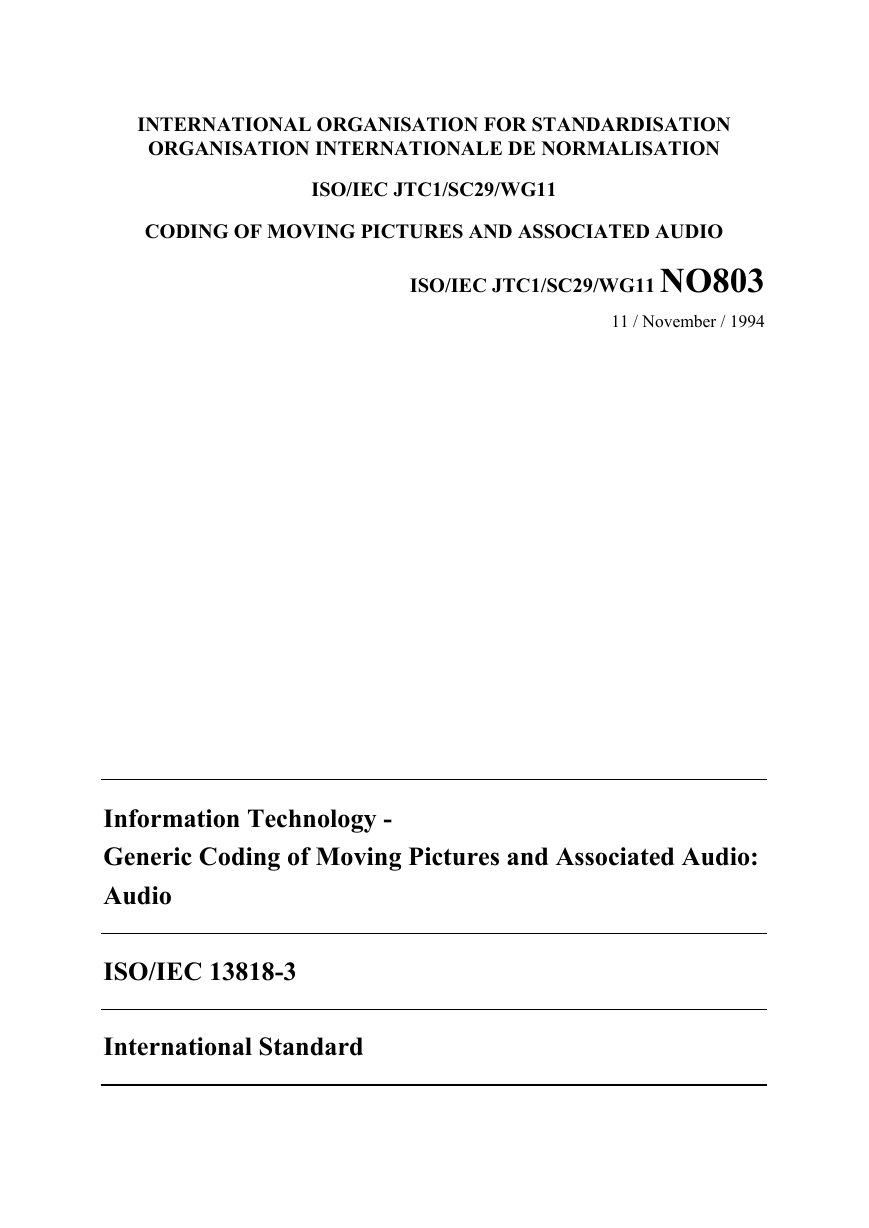
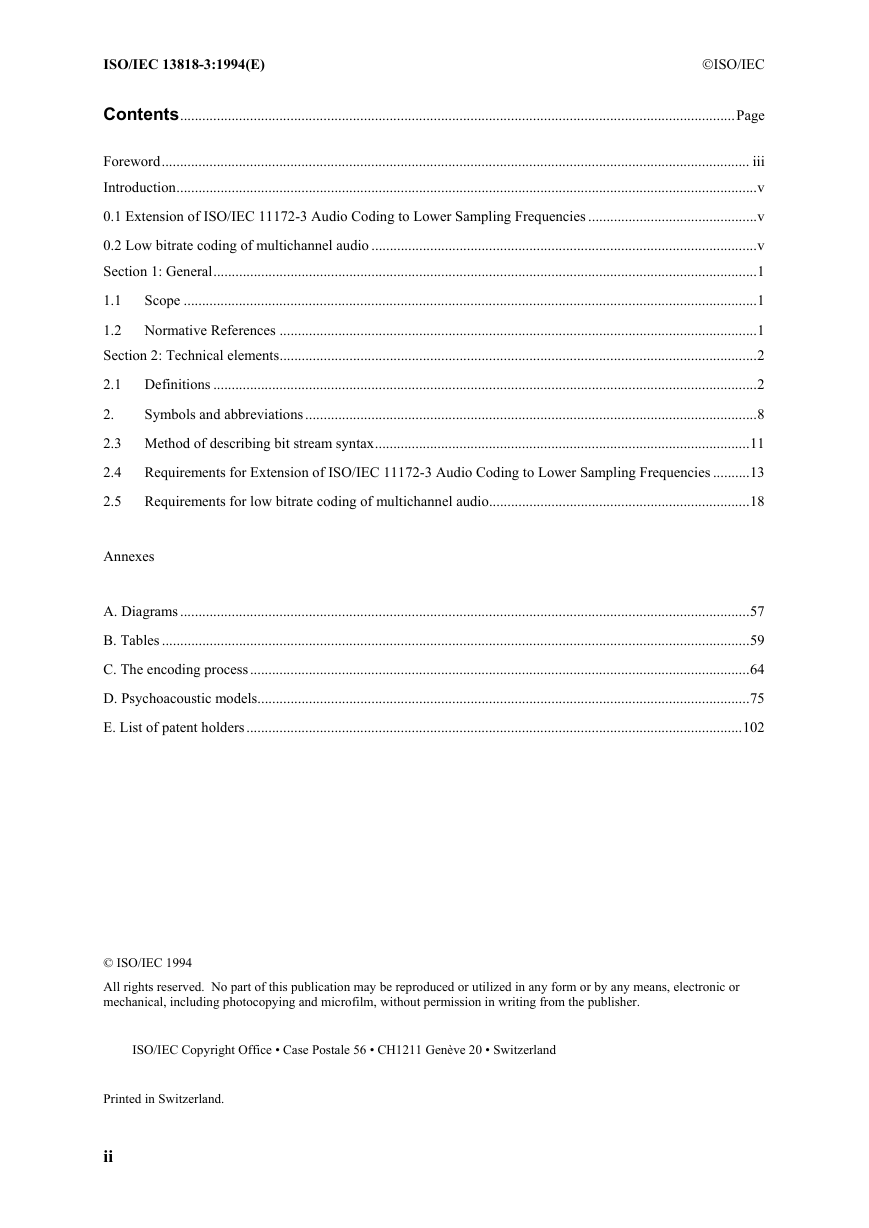


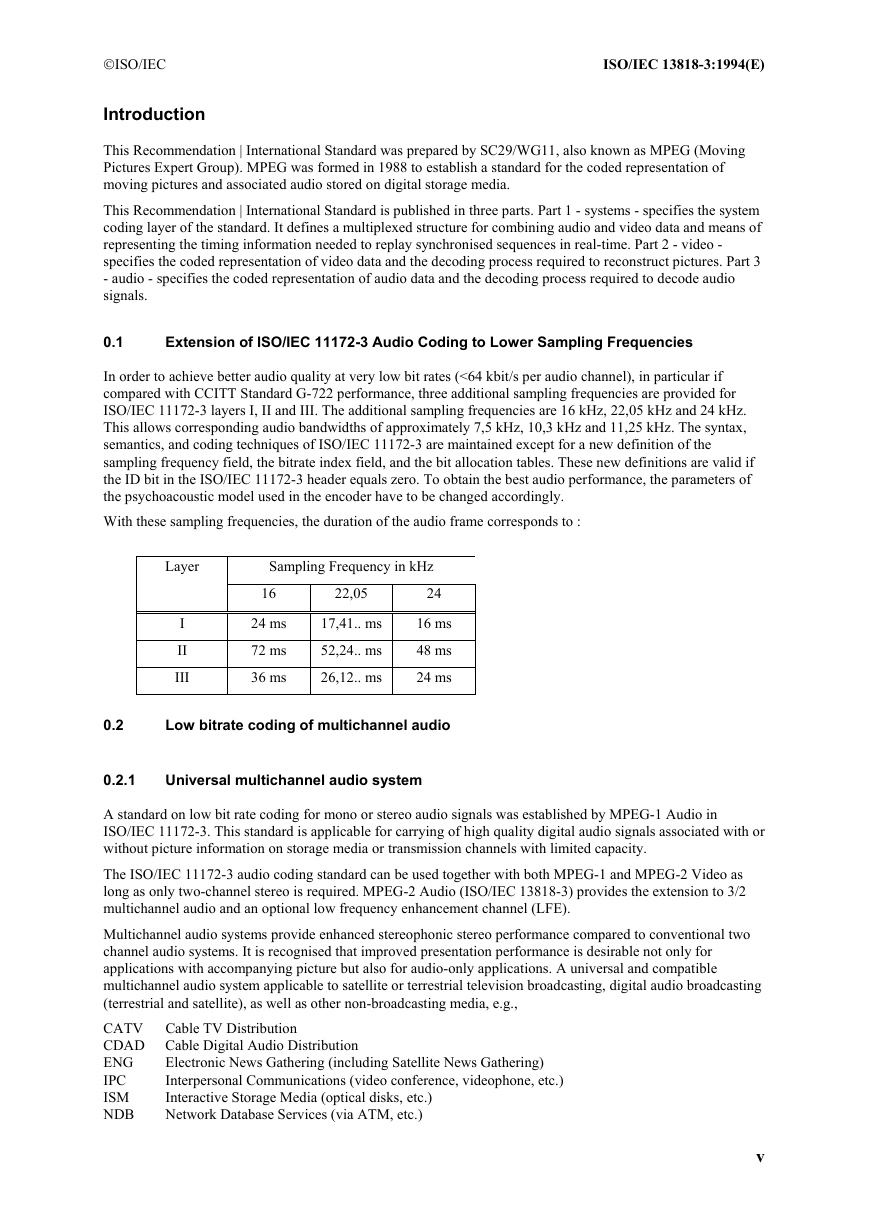

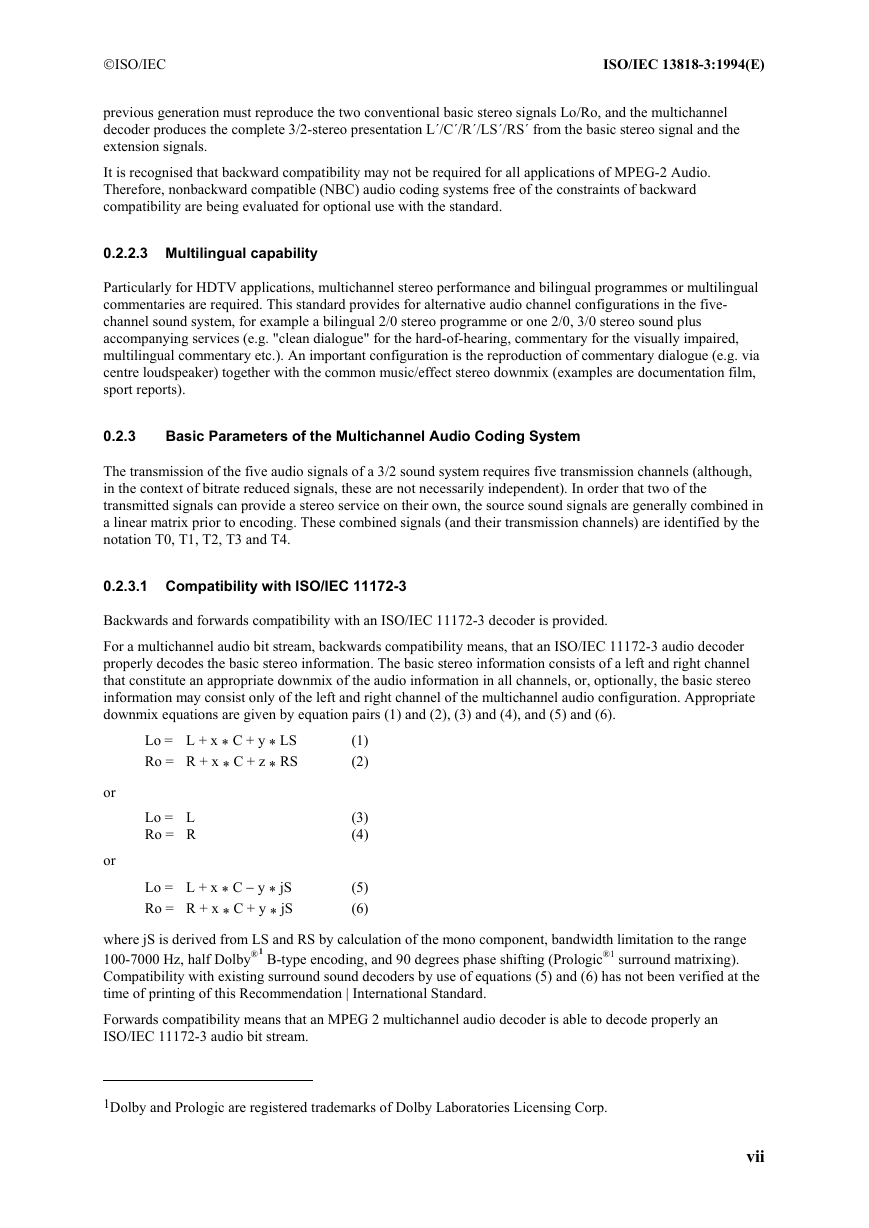
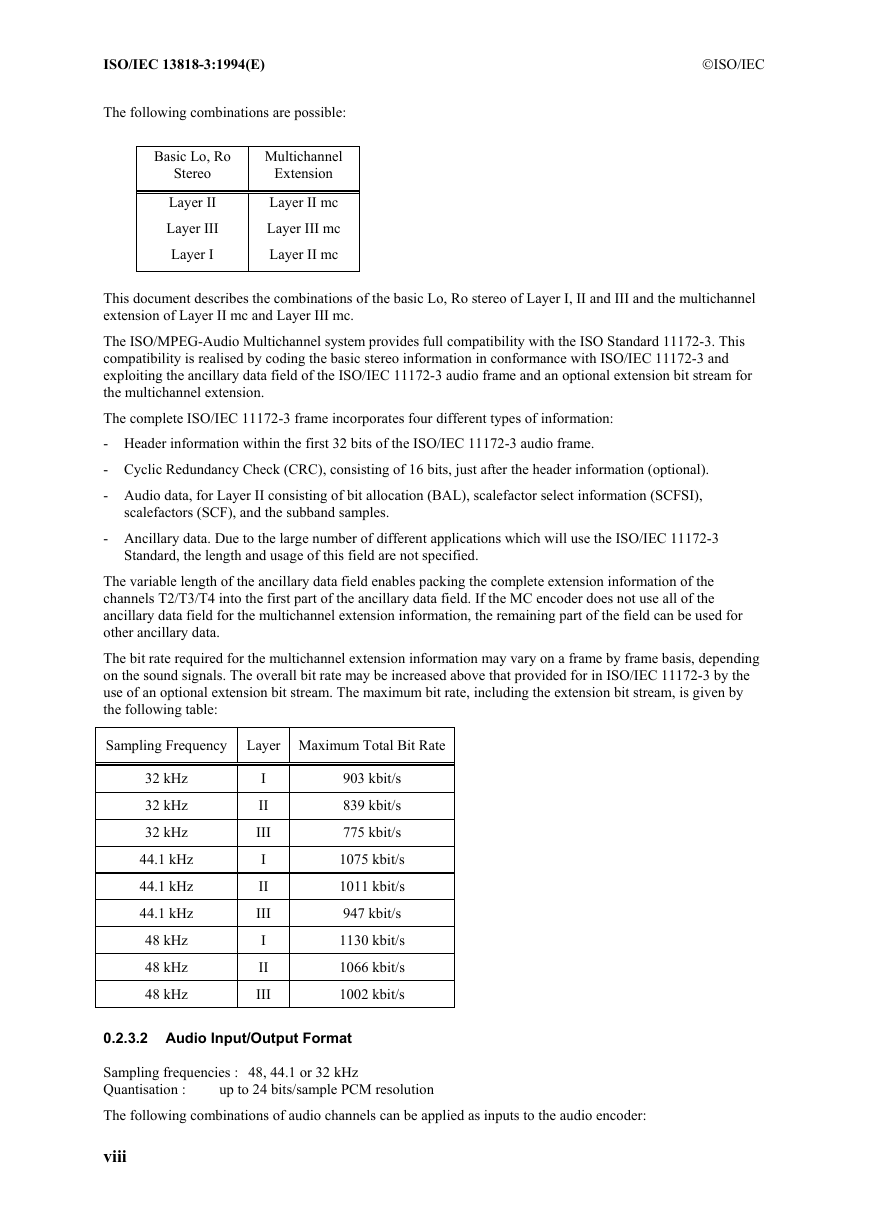








 2023年江西萍乡中考道德与法治真题及答案.doc
2023年江西萍乡中考道德与法治真题及答案.doc 2012年重庆南川中考生物真题及答案.doc
2012年重庆南川中考生物真题及答案.doc 2013年江西师范大学地理学综合及文艺理论基础考研真题.doc
2013年江西师范大学地理学综合及文艺理论基础考研真题.doc 2020年四川甘孜小升初语文真题及答案I卷.doc
2020年四川甘孜小升初语文真题及答案I卷.doc 2020年注册岩土工程师专业基础考试真题及答案.doc
2020年注册岩土工程师专业基础考试真题及答案.doc 2023-2024学年福建省厦门市九年级上学期数学月考试题及答案.doc
2023-2024学年福建省厦门市九年级上学期数学月考试题及答案.doc 2021-2022学年辽宁省沈阳市大东区九年级上学期语文期末试题及答案.doc
2021-2022学年辽宁省沈阳市大东区九年级上学期语文期末试题及答案.doc 2022-2023学年北京东城区初三第一学期物理期末试卷及答案.doc
2022-2023学年北京东城区初三第一学期物理期末试卷及答案.doc 2018上半年江西教师资格初中地理学科知识与教学能力真题及答案.doc
2018上半年江西教师资格初中地理学科知识与教学能力真题及答案.doc 2012年河北国家公务员申论考试真题及答案-省级.doc
2012年河北国家公务员申论考试真题及答案-省级.doc 2020-2021学年江苏省扬州市江都区邵樊片九年级上学期数学第一次质量检测试题及答案.doc
2020-2021学年江苏省扬州市江都区邵樊片九年级上学期数学第一次质量检测试题及答案.doc 2022下半年黑龙江教师资格证中学综合素质真题及答案.doc
2022下半年黑龙江教师资格证中学综合素质真题及答案.doc